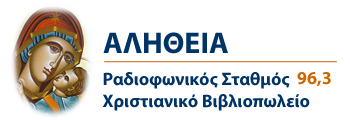During my recent pilgrimage to Patmos, on my way back through Kalymnos, I venerated the incorrupt relics of an amazing ascetic and Saint of the “latter days”, our Holy Father Savvas the New of Kalymnos. I even spoke to people whose parents confessed to him and remember with tears his love, compassion and angelic purity.
I would like to share here two episodes from his life
which made a big impression on me (recorded in the monastery’s edition of his
life):
In Athens he
met the acolyte of Saint Nektarios, who informed him that Saint Nektarios was
looking for him. Based on this fact, it is assumed that the two saints had met
before; in fact, most biographers agree that St Savvas was St. Nektarios’
spiritual child. Therefore, he went from Athens to Aegina in 1919, where he was
with Saint Nektarios until he reposed. There he served as a priest in the
Convent of the Holy Trinity. He taught the nuns iconography and ecclesiastical
music. Upon the repose of Saint Nektarios in 1920, Savas witnessed the first
miracle of the Saint when, after his repose, St. Nektarios leaned over so that
St. Savas could attire him with his epitrahelion [ie. stole], and then the
Saint returned back to his previous rigour mortis (ie. postmortem rigidity).
St. Savas performed the funeral and for the first three nights he continued his
communication with St. Nektarios over his grave, asking him a number of
questions and listening to his answers! St. Savvas’ biographers have recorded
those facts from first-hand witnesses and the stunned nuns’ testimonies.
Then, St. Savas enclosed himself in a cell for forty
days where he lived in strict prayer and fasting, and emerged holding an icon
of Saint Nektarios he had painted, which was the first icon of the Saint to
exist. He gave the icon to the abbess ordering her to offer to the faithful for
veneration. The abbess told him that this was not possible, as St Nektarios had
not been yet officially canonised despite his numerous miracles from the very
first moment of his repose and that such an action was not prudent and might get
them in trouble with the ecclesiastical authorities and even cause the shutting
down of the monastery. But St. Savas insisted that “You must obey. Take this
icon and offer it for veneration and do not scrutinise God’s Ways”.
The second episode too happened again in Aegina. A
young nun, Nektaria, wanted to see for one last time the face of St. Nektarios
after his repose and started digging stealthily his tomb. The other nuns caught
her in the act and reported her to the Abbess. She rebuked her and then sent
her to St. Savas. He too rebuked her sternly and told her that her action was
called grave-robbing and she should not receive Holy Communion until Holy Thursday.
The young nun started to cry and beg for forgiveness, telling St. Savas that
she did not know that what she had been doing was wrong and sinful. As soon as
she left St. Savas’ cell, St. Nektarios appeared to St. Savas, smiling, and told him: “Elder, forgive her. She is
very young. She didn’t know, she didn’t know that this was a sin. Offer her
Holy Communion on Holy Thursday. Actually, offer her Holy Communion before Holy
Thursday. Did you hear, Elder? Have mercy on her. She did not know. Did you hear? Thank you.”
This angel on earth and a human in heaven was born in
1862 Herakleitsa, Eastern Thrace, Ottoman Empire and reposed in our Lord on 7
April 1947 (aged 85). He lived as a monastic and practiced the arts of
Iconography and Ecclesiastical Music in the Saint Anna’s Skete (Mount Athos),
the historic Monastery of Saint George Chozeba, the Convent of the Holy Trinity
(Aegina), the monastery of St John the theologian and Evangelist (Patmos) and
the Convent of All Saints (Kalymnos) and a number of caves and hermitages all
over the world. His feast day is 7 April
(25 March), The Fifth Sunday in Lent and was canonised in 1992.











Δεν υπάρχουν σχόλια:
Δημοσίευση σχολίου